Programmed and Projected by Julian Antos, Becca Hall, Rebecca Lyon, Kyle Westphal, and Cameron Worden.
Our screenings are held at multiple venues around Chicago, including:
- The Auditorium at Northeastern Illinois University (Building E) – 3701 W. Bryn Mawr Ave., Chicago, IL 60625
Tickets: General Admission: $5 • NEIU Students: $2
- The Music Box Theatre – 3733 N. Southport Ave., Chicago, IL 60613
Tickets: General Admission: $7
- The Logan Center for the Arts – 915 E. 60th St., Chicago, IL 60637
Free Admission
Wednesday, January 11 @ 7:30 PM / NEIU
NIGHTMARE ALLEY
Directed by Edmund Goulding • 1947
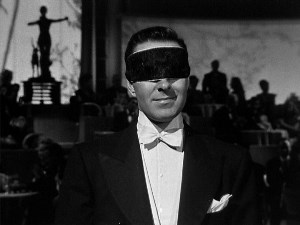 Tyrone Power bought the rights to William Lindsay Gresham’s novel Nightmare Alley out of a desire for a role with more psychological depth than his usual swashbucklers, an aspiration more than fulfilled in this brutal film noir. (It was probably hard for a man to don the mask of Zorro after returning from the horrors of World War II.) Power plays small-time carnival barker Stan Carlisle, who begins his descent after witnessing the most sinister of sideshow acts: a “geek” who bites the heads off live chickens. Stan reacts with both horror and fascination, and thus begins his unintentional journey to find out exactly how a man could sink to such depths. He uses a tragic accident to convince Zeena (Joan Blondell) to teach him the code for a mind-reading act that once had her and her husband Pete (Ian Keith) at the top of the vaudeville game. With the help of Molly (aka Elektra the electric chair wonder, played by Coleen Gray) and a crooked psychologist (Helen Walker) willing to offer up her patients’ secrets, Stan turns his mentalist stage act into something much more ambitious, providing “spiritual comfort, whatever the cost,” to members of Chicago high society. (Perhaps in another story Stan might have gone on to create Dianetics.) Nightmare Alley was a flop upon its release due to its unsavory subject matter and the studio’s open dislike for the property, but it remains a nasty and unforgettable film. Nightmare Alley stumbles briefly in an attempt to insert a moral message that the original novel lacked, but don’t worry–even these half-hearted attempts can’t help Stan (and us) escape the screams of the geek and the bottom of the bottle. (RL)
Tyrone Power bought the rights to William Lindsay Gresham’s novel Nightmare Alley out of a desire for a role with more psychological depth than his usual swashbucklers, an aspiration more than fulfilled in this brutal film noir. (It was probably hard for a man to don the mask of Zorro after returning from the horrors of World War II.) Power plays small-time carnival barker Stan Carlisle, who begins his descent after witnessing the most sinister of sideshow acts: a “geek” who bites the heads off live chickens. Stan reacts with both horror and fascination, and thus begins his unintentional journey to find out exactly how a man could sink to such depths. He uses a tragic accident to convince Zeena (Joan Blondell) to teach him the code for a mind-reading act that once had her and her husband Pete (Ian Keith) at the top of the vaudeville game. With the help of Molly (aka Elektra the electric chair wonder, played by Coleen Gray) and a crooked psychologist (Helen Walker) willing to offer up her patients’ secrets, Stan turns his mentalist stage act into something much more ambitious, providing “spiritual comfort, whatever the cost,” to members of Chicago high society. (Perhaps in another story Stan might have gone on to create Dianetics.) Nightmare Alley was a flop upon its release due to its unsavory subject matter and the studio’s open dislike for the property, but it remains a nasty and unforgettable film. Nightmare Alley stumbles briefly in an attempt to insert a moral message that the original novel lacked, but don’t worry–even these half-hearted attempts can’t help Stan (and us) escape the screams of the geek and the bottom of the bottle. (RL)
110 min • 20th Century-Fox • 35mm from Criterion Pictures, USA
Film Stock: Eastman B+W (1979)
Cartoon: “Make Me Psychic” (Sally Cruikshank, 1978) – 35mm – 8 min
Wednesday, January 18 @ 7:30 PM / NEIU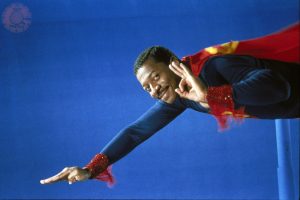
HOLLYWOOD SHUFFLE
Directed by Robert Townsend • 1987
Bobby Taylor works for the Winky-Dinky-Dog stand but dreams of stardom and sets out for Hollywood despite the advice of his coworkers. A funny-as-hell, take-no-prisoners critique of Hollywood’s stereotypical portrayal of African Americans, Hollywood Shuffle was inspired by Chicago-born Robert Townsend’s own experiences in show business after his starring role in A Soldier’s Story: “I started getting calls for slaves, pimps, muggers, and rapists, and I said ‘I can’t do this…’ so I said ‘I’ll go do my own film. I didn’t go to film school, but I had seen enough bad movies to know what I don’t like.’” Made for $100,000 using Townsend’s savings and credit cards, Hollywood Shuffle’s energy is manic and infectious, so much so that it made its budget back fifty times over. The jokes still cut close to the bone, and, per the Washington Post, “should thoroughly embarrass those studios that routinely offer up badly made, multimillion-dollar disasters.” (JA)
82 min • Conquering Unicorn • 35mm Park Circus
Film Stock: Eastman LPP (1986)
Production Short: “Uptown Saturday Night” (Sidney Poitier, 1971) – 16mm – 9 min
Monday, January 23 @ 7:00 PM / The Music Box Theatre
Chicago Restoration Premiere
THE FRONT PAGE
Directed by Lewis Milestone • 1931
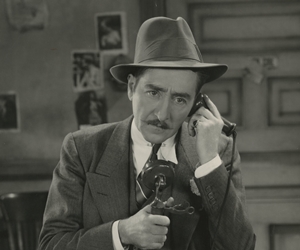 Ben Hecht and Charles MacArthur’s 1928 play is one of the most durable comedies in the American repertory, and Lewis Milestone’s brash and brisk screen adaptation deserves a place of pride alongside it. Set in Prohibition-era Chicago, this cynical valentine to the ink-stained wretches of the world chronicles ace reporter Hildy Johnson’s fitful efforts to get married, settle down, and leave his yellow profession behind. But Hildy’s hard-assed editor, Walter Burns, can’t lose his best scrivener, especially when the imminent execution of a Red rabble-rouser is worth its weight in column inches. The play would be adapted for the screen another half-dozen times (including formidable efforts by Howard Hawks and Billy Wilder), but Milestone’s 1931 version with Pat O’Brien and Adolphe Menjou comes closest to matching Hecht and MacArthur’s devil-may-care immediacy; it’s not a period piece, but a vulgar salute ripping through the air. Contemporary reviewers lavished The Front Page with superlatives: Harry Alan Potamkin anointed Milestone the first major cinema innovator since D. W. Griffith, and Pare Lorentz urged his readers to see this “extraordinary movie” before “Mr. Hays, Mr. Akerson, or the Republican Committee on Humor burn all the available prints.” No prints were burned, but we’ve had to suffice with a toned-down version prepared for European audiences from alternate takes — until now. Finally restored to the original American release version for the first time in decades, The Front Page is a pre-Code marvel with a machine-gun stride. (KW)
Ben Hecht and Charles MacArthur’s 1928 play is one of the most durable comedies in the American repertory, and Lewis Milestone’s brash and brisk screen adaptation deserves a place of pride alongside it. Set in Prohibition-era Chicago, this cynical valentine to the ink-stained wretches of the world chronicles ace reporter Hildy Johnson’s fitful efforts to get married, settle down, and leave his yellow profession behind. But Hildy’s hard-assed editor, Walter Burns, can’t lose his best scrivener, especially when the imminent execution of a Red rabble-rouser is worth its weight in column inches. The play would be adapted for the screen another half-dozen times (including formidable efforts by Howard Hawks and Billy Wilder), but Milestone’s 1931 version with Pat O’Brien and Adolphe Menjou comes closest to matching Hecht and MacArthur’s devil-may-care immediacy; it’s not a period piece, but a vulgar salute ripping through the air. Contemporary reviewers lavished The Front Page with superlatives: Harry Alan Potamkin anointed Milestone the first major cinema innovator since D. W. Griffith, and Pare Lorentz urged his readers to see this “extraordinary movie” before “Mr. Hays, Mr. Akerson, or the Republican Committee on Humor burn all the available prints.” No prints were burned, but we’ve had to suffice with a toned-down version prepared for European audiences from alternate takes — until now. Finally restored to the original American release version for the first time in decades, The Front Page is a pre-Code marvel with a machine-gun stride. (KW)
Restored in 2016 by the Academy Film Archive and The Film Foundation. Restoration funding provided by the George Lucas Family Foundation. Elements for this restoration provided by The Howard Hughes Corporation, the University of Nevada, Las Vegas College of Fine Arts, Department of Film and its Howard Hughes Collection at the Academy Film Archive.
98 min • The Caddo Company • 35mm from Academy Film Archive
Film Stock: Kodak Lab: Fotokem
Cartoon: Betty Boop in “Admission Free” (Dave Fleischer, 1932) – 16mm – 7 min
Wednesday, January 25 @ 7:30 PM / NEIU
WIND ACROSS THE EVERGLADES
Directed by Nicholas Ray • 1958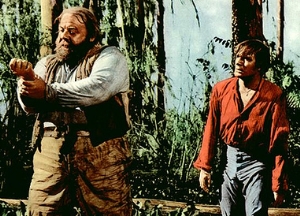
Dead in the midst of another brutal Chicago winter, we may look upon the vision of balmy South Florida seen in Nicholas Ray’s brilliantly haphazard environmentalist swamp western Wind Across the Everglades for a glimpse of all we’re missing: fever, drunken madness, and death by any one of the region’s plethora of toxic flora and fauna. Having just arrived in turn-of-the-century Miami, outspoken conservationist Walt Murdock (Christopher Plummer) is summarily hired as game warden for the Everglades and immediately tasked with going after a gang of poachers who are killing off the region’s birds and selling their feathers. A career-best Burl Ives leads the gang as Cottonmouth, named for the venomous snake kept in his pocket, who lives by the philosophy of “eat or be et”, and prides himself on being “swamp-born, swamp-fattened.” The all-location production of Wind Across the Everglades was notoriously tempestuous, with cast and crew members sick or soused for much of its making. Ray himself was fired before the film wrapped due to his erratic behavior and conspicuous heroin habit. While Wind Across the Everglades certainly bears the scars of its troubled makings, it remains a key film in Ray’s filmography. It’s hard to imagine a smoother shoot yielding a film so unique, vigorous, or full of life. (CW)
93 min • Warner Bros. • 35mm from Warner Bros.
Film Stock: Kodak 2383 (2002)
Short: “Weekend at Weeki Wachee” (1964) – 35mm – 12 min
Wednesday, February 1 @ 7:30 PM / NEIU
NIGHT ON EARTH
Directed by Jim Jarmusch • 1991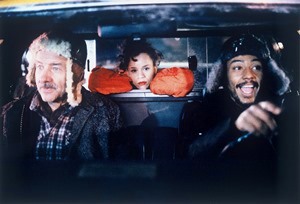
The fifth feature from Jim Jarmusch, patron saint of wandering souls, the heavily cosmopolitan Night on Earth is one of his three “vignette” films, sitting between Mystery Train and Coffee and Cigarettes. Taking place in five different cities around the world, each segment shows strangers in the night coming together in that most underrated of intimate spaces, the taxicab. Like most of Jarmusch’s films, Night on Earth is thematically huge and small at the same time; the phrase “Where to?”, uttered from the cab drivers to their fares, can and does elicit an infinite variety of answers, profound and otherwise. Night on Earth features a dizzying array of actors, including (but not limited to) Béatrice Dalle, Isaach De Bankóle, Roberto Benigni, Giancarlo Esposito, Rosie Perez, Gena Rowlands, and Winona Ryder, epitomizing early ’90s chic. (Jarmusch apparently chose the cities–Los Angeles, New York, Paris, Rome, and Helsinki–based on who he wanted to work with.) With brooding cinematography by longtime Jarmusch collaborator Frederick Elmes (Blue Velvet, The Ice Storm) and a soundtrack by Tom Waits at his most guttural. Come for the actors and stay for the taxis, including Ryder’s 1981 Chevy Caprice Wagon, a true thing of beauty. (RL)
128 min • JVC Entertainment Networks • 35mm from Janus Films
Film Stock: Eastman LPP (1991)
Cartoon: Alvin and the Chipmunks in “Finiculi Finicula” (1960) – 16mm – 3 min
Monday, February 6 @ 7:30 PM / The Music Box Theatre
CANDY MOUNTAIN
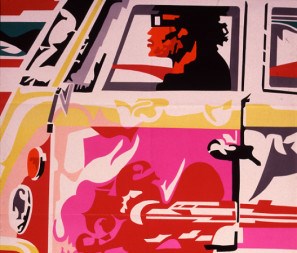 Directed by Robert Frank and Rudy Wurlitzer • 1987
Directed by Robert Frank and Rudy Wurlitzer • 1987
The cult rock ‘n’ roll weirdo road movie of your dreams, the wildly underseen and very funny Candy Mountain somehow manages to be both a lark and a creative and thematic apotheosis for both of its codirectors, photographer/filmmaker Robert Frank and novelist/screenwriter Rudy Wurlitzer. Mediocre musician and all-around jackass Julius (Kevin J. O’Connor) insinuates himself into a deal to track down legendary and reclusive guitar maker Elmore Silk, an oblique figure who has left a trail of disgruntled family members and forlorn ex-lovers in his wake. Julius finds that nothing about his assignment is easy as he loses vehicle after vehicle, drinks himself into a stupor, and meets innumerable deranged personalities (a great many of whom are played by notable musicians, including Tom Waits as a yuppie, Joe Strummer and Arto Lindsay as the world’s worst no wave band, and Dr. John as a wheelchair-bound psychopath) whom he invariably leaves frustrated, confused, or enraged. Given that Frank and Wurlitzer were best known, respectively, for the photography book The Americans and the screenplay for Two-Lane Blacktop, it should come as no shock that their feature film collaboration would so greatly concern itself with America’s preoccupation with the road and wayward notions of freedom. Nor should its deeply odd, dead-end splendor surprise us, given the tremendous creative brain trust involved. (CW)
91 min • Xanadu Films • 35mm from the Museum of Fine Arts, Houston
Film Stock: Eastman LPP (1987) Lab: GTC
Short: “Energy and How to Get It” (Robert Frank, Rudy Wurlitzer, and Gary Hill, 1981) – 16mm – 28 min
Wednesday, February 8 @ 7:30 PM / NEIU
THE ERRAND BOY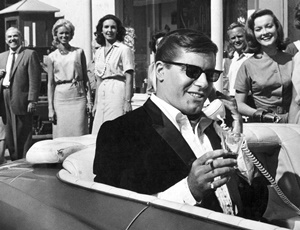
Directed by Jerry Lewis • 1961
If I see if it says I go to a place, I go there, but if I don’t, ’cause then it won’t be clear… Paramutual Pictures is bleeding money and nobody can figure out where from, so studio head Tom ‘T.P.’ Paramutual (Brian Donlevy) hires Morty S. Tashman (Jerry Lewis)–“someone so stupid he won’t realize he’s eavesdropping”–as a spy. What follows is an episodic collection of some of Jerry Lewis’s best scenes: a heart-to-heart with a stuffed ostrich and a tiny clown, an elevator-as-sardine-can skit from hell, and a pantomime to the Count Basie Orchestra’s Blues in Hoss, Flat which has inspired several hundred YouTube parodies. An obfuscation of the English language and the rules of comedy, The Errand Boy turns Hollywood on its head, gleefully shaking out every nickel and jelly bean and tooting a gleeful “screw you!” to moviegoers who just don’t get Jerry Lewis. Hardcore Three Stooges fans will recognize Joe Besser in a small supporting role as a studio projectionist. (JA)
92 min • Paramount Pictures • 35mm from NWCFS collections, courtesy of Jerry Lewis.
Film Stock: Agfa Gevaert
Preceded by: Outtakes from The Ladies Man – 35mm – 4 min
Wednesday, February 15 @ 7:30 PM / NEIU
PUZZLE OF A DOWNFALL CHILD
Directed by Jerry Schatzberg • 1970
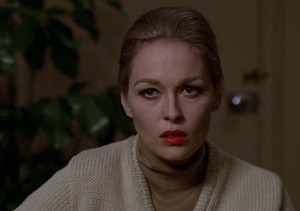 The first feature from Jerry Schatzberg, the Bronx-born fashion photographer who contributed to Vogue and Esquire and shot the album jacket for Blonde on Blonde, is the kind of purposefully obtuse, awesomely ambiguous, sharp-as-a-stiletto psychological melodrama that could only have emerged from early ’70s Hollywood. A character study of troubled fashion model Lou Andreas Sand (Faye Dunaway, stunning), Puzzle of a Downfall Child assays a fragmented, nonlinear narrative style to match the mindset of its profoundly unreliable narrator. It plays like an art house version of Valley of the Dolls, as if directed by Alain Resnais. (The masterful editing is the work of Evan Lottman, who would evoke a similar sense of unease in The Exorcist and The Muppets Take Manhattan.) Recalling her career from her beachside cottage after a nervous breakdown, Lou sketches a journey marked by professional betrayal and sexual predation from mentors (Viveca Lindfors), suitors (Barry Primus), and ad execs (Roy Scheider). Written by Five Easy Pieces scribe Carole Eastman under her usual pseudonym Adrien Joyce, Puzzle remains notable, in the words of film blogger Ken Anderson, as “an oasis of estrogen ennui in the testosterone-laden desert of male-centric ’70s films romanticizing male identity crises and masculine existential moments-of-reckoning.” Long regarded as a classic in France but practically invisible in the US, this beguiling Puzzle deserves to be unlocked. (KW)
The first feature from Jerry Schatzberg, the Bronx-born fashion photographer who contributed to Vogue and Esquire and shot the album jacket for Blonde on Blonde, is the kind of purposefully obtuse, awesomely ambiguous, sharp-as-a-stiletto psychological melodrama that could only have emerged from early ’70s Hollywood. A character study of troubled fashion model Lou Andreas Sand (Faye Dunaway, stunning), Puzzle of a Downfall Child assays a fragmented, nonlinear narrative style to match the mindset of its profoundly unreliable narrator. It plays like an art house version of Valley of the Dolls, as if directed by Alain Resnais. (The masterful editing is the work of Evan Lottman, who would evoke a similar sense of unease in The Exorcist and The Muppets Take Manhattan.) Recalling her career from her beachside cottage after a nervous breakdown, Lou sketches a journey marked by professional betrayal and sexual predation from mentors (Viveca Lindfors), suitors (Barry Primus), and ad execs (Roy Scheider). Written by Five Easy Pieces scribe Carole Eastman under her usual pseudonym Adrien Joyce, Puzzle remains notable, in the words of film blogger Ken Anderson, as “an oasis of estrogen ennui in the testosterone-laden desert of male-centric ’70s films romanticizing male identity crises and masculine existential moments-of-reckoning.” Long regarded as a classic in France but practically invisible in the US, this beguiling Puzzle deserves to be unlocked. (KW)
104 min • Universal Pictures • 35mm from Universal
Film Stock: Kodak 2383 (2011) Lab: Fotokem
Short: “Confessions of a Stardreamer” (John Canemaker, 1978) – 16mm – 9 min
Tuesday, February 21 @ 7:30 PM / NEIU
LAW AND ORDER
Directed by Edward L. Cahn • 1932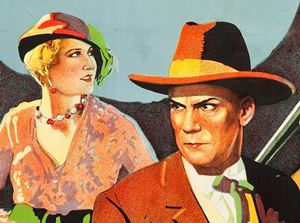
Before John Huston directed his father Walter to an Academy Award in The Treasure of Sierra Madre, Huston père et fils collaborated on an equally stark frontier morality play—Law and Order, a loose retelling of the Wyatt Earp saga. Walter Huston stars as Frame Johnson, the man who “cleaned up Kansas and killed thirty-five men, one for each year of his life.” Upon his arrival in Tombstone, he reluctantly takes up the mantle of town marshal, only to learn that his new constituents hold niceties like the rule of law in low regard. Scripted by John Huston from a W. R. Burnett novel, Law and Order is further enlivened by the prowling, energetic camera sense of Edward L. Cahn, a longtime editor and apprentice of Paul Leni and Paul Fejos who began his solo directorial career with this film. Curator Dave Kehr and filmmaker Bertrand Tavernier have recently touted the vigor of Cahn’s early work, but the late historian William K. Everson sang the praises of Law and Order as far back as 1962, citing it as the only sound Western to match the “documentary-like austerity” of William S. Hart’s magisterial silent efforts. Avoid the 1952 Technicolor remake with Ronald Reagan! (KW)
75 min • Universal Pictures • 35mm from Universal
Film Stock: Kodak (2012) Lab: Fotokem
Cartoon: “Willie the Kid” (Robert Cannon, 1952) – 16mm – 7 min
Wednesday, March 1 @ 7:30 PM / NEIU
WHAT’S THE MATTER WITH HELEN?
Directed by Curtis Harrington • 1971
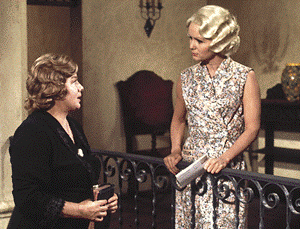 After their sons are convicted of a grisly murder, Debbie Reynolds and Shelley Winters flee the death threats and small-town scorn of Depression-era Braddock, Iowa, and make their way to Hollywood. Galvanized by the success of Shirley Temple, Reynolds decides to open a dance academy for “moppets with ambitious moms,” while repressed evangelical Winters, who hasn’t seen a movie since King of Kings, endlessly thumps out “Goody Goody” on the piano. Reynolds quickly woos a Texas gazillionaire, but Winters can’t surrender to the California sun, finding ever-present reminders of past traumas. A superlative entry in the hag horror cycle penned by the subgenre’s originator, Henry Farrell (What Ever Happened to Baby Jane? and Hush … Hush, Sweet Charlotte), What’s the Matter with Helen? was a perfect project for Hollywood historian, avant-garde wunderkind, and exploitation maven Curtis Harrington. The supporting cast boasts assorted crazies (Timothy Carey as a hobo) and macabre Orson Welles collaborators (Dennis Weaver as Reynolds’s paramour, Agnes Moorehead riffing on radio evangelist Aimee Semple McPherson, and Micheál MacLiammóir as the elocution coach who believes “your moppets must learn to speak distinctly, as well as shake their fat little legs”). Despite the release being sabotaged by a half-assed, spoiler-packed marketing campaign, Harrington cited Helen as his personal favorite among his films. (KW)
After their sons are convicted of a grisly murder, Debbie Reynolds and Shelley Winters flee the death threats and small-town scorn of Depression-era Braddock, Iowa, and make their way to Hollywood. Galvanized by the success of Shirley Temple, Reynolds decides to open a dance academy for “moppets with ambitious moms,” while repressed evangelical Winters, who hasn’t seen a movie since King of Kings, endlessly thumps out “Goody Goody” on the piano. Reynolds quickly woos a Texas gazillionaire, but Winters can’t surrender to the California sun, finding ever-present reminders of past traumas. A superlative entry in the hag horror cycle penned by the subgenre’s originator, Henry Farrell (What Ever Happened to Baby Jane? and Hush … Hush, Sweet Charlotte), What’s the Matter with Helen? was a perfect project for Hollywood historian, avant-garde wunderkind, and exploitation maven Curtis Harrington. The supporting cast boasts assorted crazies (Timothy Carey as a hobo) and macabre Orson Welles collaborators (Dennis Weaver as Reynolds’s paramour, Agnes Moorehead riffing on radio evangelist Aimee Semple McPherson, and Micheál MacLiammóir as the elocution coach who believes “your moppets must learn to speak distinctly, as well as shake their fat little legs”). Despite the release being sabotaged by a half-assed, spoiler-packed marketing campaign, Harrington cited Helen as his personal favorite among his films. (KW)
101 min • Filmways Pictures/Raymax Productions • 35mm from Park Circus
Film Stock: Kodak 386 (1997)
Short: Thelma Todd & Patsy Kelly in “Beauty and the Bus” (Gus Meins, 1933) – 16mm – 18 min
Wednesday, March 8 @ 7:30 PM / NEIU
THE YOUNGER GENERATION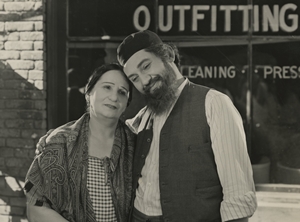
Directed by Frank Capra • 1929
Adapted from a play by Humoresque author Fannie Hurst, The Younger Generation is Columbia Pictures’s answer to The Jazz Singer, an altogether heartbreaking portrait of intergenerational conflict in New York’s Jewish community. Julius Goldfish (Jean Hersholt, namesake for the Academy of Motion Pictures Arts and Sciences’s Humanitarian Award) is a modest man who lives on Delancey Street and earns his living by hawking kitchenwares from a pushcart. His son Morris (Ricardo Cortez) has his eyes set on tonier things; after demonstrating marketing acumen at an early age by turning a tragic tenement fire into a fire sale, Morris grows his father’s business until it becomes a respectable Fifth Avenue antique dealership. Faced with pressure to assimilate into Park Avenue society, our striver changes his name to the decidedly goyish Maurice Fish and proceeds to push away his family, particularly his sister (Lina Basquette) and her song-plugger boyfriend (Rex Lease). Originally shot as a silent picture, four talking sequences were added prior to release, if only to demonstrate the proper pronunciation of “Oy gevalt” to inhabitants of America’s Heartland. (KW)
84 min • Columbia Pictures • 35mm from Sony Pictures Repertory
Film Stock: Kodak(2009) Lab: Film Technology
Short: “The Spider and the Fly” (1938) – 16mm – 12 min
Introduced by Nancy McVittie, Instructor in the College of Arts and Sciences at NEIU, and co-author of Fade to Gray: Aging in American Cinema
Monday, March 13 @ 7:00 PM / The Music Box Theatre
BABE: PIG IN THE CITY
Directed by George Miller • 1998
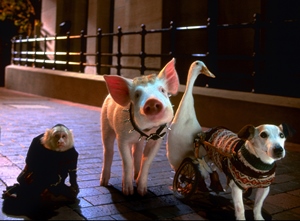 Plot takes a backseat in George Miller’s disorderly and psychedelic sequel, which has more in common with films like Willy Wonka & the Chocolate Factory and The Wizard of Oz than it does with its heartwarming predecessor. When circumstances force our little pink hero to leave his idyllic home for the city, he finds himself in a twisted Frankenstein of a place, a mix of Baz Luhrmann’s Paris and all the cities you’ve ever known. Babe is quickly severed from his companion Mrs. Hoggett (Magda Szubanski) and left to discover the city’s untold wonders (and horrors) alone. Bizarre characters abound in this bestial Mad Max: a pregnant chimp in a dress, a paraplegic Jack Russell Terrier (Adam Goldberg), a poodle the color of cotton candy, and a ghastly clown (played by Mickey Rooney, of course). It’s a film that delighted critics (it was Gene Siskel’s best film pick of 1998), horrified parents, and developed a deserved cult following since its release. One website that rates media for kids produced such choice parental reviews as “It’s dark, depressing, scary, sad…How ANYONE (let alone Roger Ebert) could say this is BETTER than the first, I will never know.” I think Bob the chimpanzee (voiced by the great Steven Wright) would respond, “It’s all illusory – it’s ill, and it’s for losers.” (RL)
Plot takes a backseat in George Miller’s disorderly and psychedelic sequel, which has more in common with films like Willy Wonka & the Chocolate Factory and The Wizard of Oz than it does with its heartwarming predecessor. When circumstances force our little pink hero to leave his idyllic home for the city, he finds himself in a twisted Frankenstein of a place, a mix of Baz Luhrmann’s Paris and all the cities you’ve ever known. Babe is quickly severed from his companion Mrs. Hoggett (Magda Szubanski) and left to discover the city’s untold wonders (and horrors) alone. Bizarre characters abound in this bestial Mad Max: a pregnant chimp in a dress, a paraplegic Jack Russell Terrier (Adam Goldberg), a poodle the color of cotton candy, and a ghastly clown (played by Mickey Rooney, of course). It’s a film that delighted critics (it was Gene Siskel’s best film pick of 1998), horrified parents, and developed a deserved cult following since its release. One website that rates media for kids produced such choice parental reviews as “It’s dark, depressing, scary, sad…How ANYONE (let alone Roger Ebert) could say this is BETTER than the first, I will never know.” I think Bob the chimpanzee (voiced by the great Steven Wright) would respond, “It’s all illusory – it’s ill, and it’s for losers.” (RL)
97 min • Universal Pictures • 35mm from Universal
Short: “The Dancing Pig” (“Le cochon danseur”) (Pathé Frères, 1907) – 35mm – 4 min
Monday, April 3 @ 7:00 PM / The Music Box Theatre
VERONIKA VOSS
Directed by Rainer Werner Fassbinder • 1982
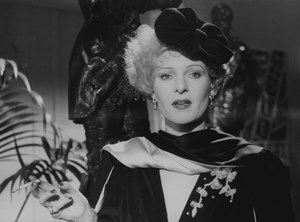 In German with English subtitles
In German with English subtitles
Rainer Werner Fassbinder’s most unambiguously beautiful film was also the last one he lived to see released. Months after Veronika Voss premiered at the Berlin International Film Festival, where it would win the Golden Bear, Fassbinder would be dead of a drug overdose and his penultimate film would take on autobiographical echoes. Veronika Voss draws from the life and mysterious death of German actress Sybille Schmitz, best known abroad for her work in Carl Dreyer’s Vampyr but notorious in her home country for remaining active in the German film industry throughout the Third Reich. Fassbinder tracks the final days of his titular character (played with otherworldly abandon by the phenomenal German TV actress Rosel Zech), a has-been movie star with a paralyzing morphine addiction, as she is besieged by parasitic medical professionals, carries on an affair with a local sports reporter, and attempts to mount a comeback in the German film industry of the 1950s. Recalling the heyday of American film noir, as well as the horror-tinged melodramas Sunset Boulevard and The Seventh Victim, with the addition of more than a smidge of pitch-black humor and a quietly droning soundtrack of country music hits, Veronika Voss is an icy, monochrome masterpiece, in love with classic cinema and at odds with the industry behind it. (CW)
104 min • Tango Film • 35mm from Janus Films
Short: TBA
Sunday, April 16 @ 7:00 PM / Music Box Theatre
THE LOST CITY OF Z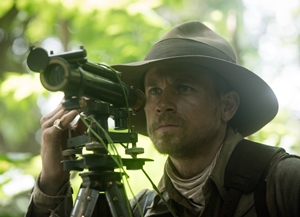
Directed by James Gray • 2016
James Gray in Person!
Based on author David Grann’s nonfiction bestseller, The Lost City of Z tells the incredible true story of British explorer Percy Fawcett (Charlie Hunnam), who journeys into the Amazon at the dawn of the 20th century and discovers evidence of a previously unknown, advanced civilization that may have once inhabited the region. Despite being ridiculed by the scientific establishment who regard indigenous populations as “savages,” the determined Fawcett — supported by his devoted wife (Sienna Miller), son (Tom Holland) and aide-de-camp (Robert Pattinson) — returns time and again to his beloved jungle in an attempt to prove his case, culminating in his mysterious disappearance in 1925. An epically scaled tale of courage and passion, told in writer/director James Gray’s classic filmmaking style, The Lost City of Z is a stirring tribute to the exploratory spirit and a conflicted adventurer driven to the verge of obsession. Rated PG-13. (Description courtesy of Bleecker Street)
140 min • Bleecker Street Films/Amazon Studios • 35mm
Co-presented by Chicago Film Society, the Music Box Theatre, Bleecker Street Films, and Amazon Studios
Wednesday, April 19 @ 7:30 PM / NEIU
WHO KILLED TEDDY BEAR?
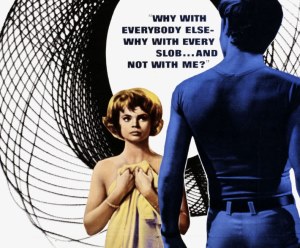 Directed by Joseph Cates • 1965
Directed by Joseph Cates • 1965
When a nightclub DJ (Juliet Prowse) receives threatening phone calls in the middle of the night, she enlists the help of detective Dave Madden (stand-up comedian and game show host Jan Murray, whose small time television personality is perfect for the role), specialist in “the sadomasochists, the voyeur masochists, the exhibitionists, the necrophiliacs,” to find the culprit. Sal Mineo, unable to avoid typecasting, is the brooding, sex-obsessed busboy who makes the calls and lives alone with his sister. A snaggly, nightmarish answer to Rebel Without a Cause, Who Killed Teddy Bear? was ahead of its time in dealing with sexual frankness, more empathetic than exploitative. Beautifully shot on location in New York by the underrated Joseph Brun (Cinerama Holiday, Wind Across the Everglades), Teddy Bear keeps its characters at arm’s length, obscured in flickery shadows and crying out for help. With Elaine Stritch in a heartbreaking turn as the nightclub manager. (JA)
94 min • Magna Pictures Distribution Corp. • 35mm from the Wisconsin Center for Film and Theater Research
Short: “Odyssey of a Dropout” (Coronet Films, 1966) – 16mm – 18 min
Thursday, April 20 @ 7:00 PM / Logan Center for the Arts / Free Admission
TWO FILMS BY DANNY LYON
Danny Lyon in Person!
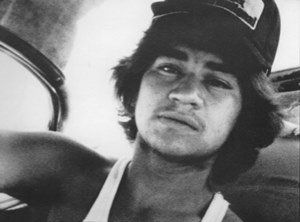 Danny Lyon’s iconic photographs have been acclaimed since the early 1960s, but his intimate non-fiction films have long remained criminally underseen. Renewed interest in this beautiful body of work has arisen following a 2016 retrospective at the Whitney Museum of American Art. Lyon’s films haven’t screened in Chicago in over two decades. Tonight we’re thrilled to present two of them with the artist in person. Born to Film (1982, 33 min) is a funny and ethereal autobiographical meditation on filmmaking and fatherhood, in which the two are more intertwined than a bull snake in a bin full of celluloid. Made over the course of several years, Willie (1985, 82 min, Newly Restored Print) follows Willie Jaramillo, whom Lyon met as a child near his home in Bernalillo, New Mexico (he appears in two of his previous films Llanito (1971) and Little Boy (1977)) as he repeatedly cycles in and out of prison for minor offenses. A dignified and heartbreaking portrait where scenes of the everyday are just as memorable as those of the bizarre. There is an emotional depth and compassion to Willie often not felt in works about “outsiders” (a frequent subject in Lyon’s photographs and films). It’s clear that Willie wasn’t just a subject, but a friend, and as he speaks to Danny through the camera he reminds us, “This is my life we’re talking about.” Don’t miss this chance to see two films you should have seen years ago.
Danny Lyon’s iconic photographs have been acclaimed since the early 1960s, but his intimate non-fiction films have long remained criminally underseen. Renewed interest in this beautiful body of work has arisen following a 2016 retrospective at the Whitney Museum of American Art. Lyon’s films haven’t screened in Chicago in over two decades. Tonight we’re thrilled to present two of them with the artist in person. Born to Film (1982, 33 min) is a funny and ethereal autobiographical meditation on filmmaking and fatherhood, in which the two are more intertwined than a bull snake in a bin full of celluloid. Made over the course of several years, Willie (1985, 82 min, Newly Restored Print) follows Willie Jaramillo, whom Lyon met as a child near his home in Bernalillo, New Mexico (he appears in two of his previous films Llanito (1971) and Little Boy (1977)) as he repeatedly cycles in and out of prison for minor offenses. A dignified and heartbreaking portrait where scenes of the everyday are just as memorable as those of the bizarre. There is an emotional depth and compassion to Willie often not felt in works about “outsiders” (a frequent subject in Lyon’s photographs and films). It’s clear that Willie wasn’t just a subject, but a friend, and as he speaks to Danny through the camera he reminds us, “This is my life we’re talking about.” Don’t miss this chance to see two films you should have seen years ago.
Total Program: 115 min • 16mm from Anthology Film Archives
Co-presented with the Film Studies Center
Special Thanks: Shayne Pepper, Michael Hines, Richard Helldobler, Kyle Burke, Cyndi Moran, Robert Ritsema, Jordan Kardasz, Ernie Kimlin, Steve Zivin, and Tony Adams of Northeastern Illinois University; Randy Andrews of Swank Motion Pictures; Brian Andreotti and Ryan Oestreich of the Music Box Theatre; David Antos & Chris Omiotek; Brian Belovarac of Janus Films; Cassie Blake of the Academy Film Archive; James Bond of Full Aperture Systems; Dorothy Bradley of the Niles Essanay Silent Film Museum; Dennis Chong, Paul Ginsburg, and Eric Chin of Universal; Chris Chouinard of Park Circus; Neil Cooper; Justin Dean; Justin Dennis of Kinora; Amanda El-Khoury & Chaclyn Hunt; Bill Francik; Bob Furmanek; Julia Gibbs and Benjamin Ruder of the University of Chicago Film Studies Center; Cary Haber of Criterion Pictures, USA; Louis Irmo of First Nonprofit Insurance; David Jennings of Sony Pictures Repertory; James Layton of the Museum of Modern Art; Jerry Lewis; Steven Lloyd; Steven Lucy; Josh B. Mabe of Chicago Filmmakers; Kris Merola of the Film Foundation; Bob Morrissey; Kristie Nakamura of Warner Bros. Classics; Mike Quintero; Julia Reinitz; David Shepard of Film Preservation Associates; Neal Sabin; Amy Sloper of the Wisconsin Center for Film and Theater Research; Tracy Stephenson and Marian Luntz of the Museum of Fine Arts, Houston; Joe Swanberg; Kiyan Warner; Nancy Watrous, Brian Belak, and Amy Belotti of Chicago Film Archives
And extra special thanks to our audience, who make it all possible!
